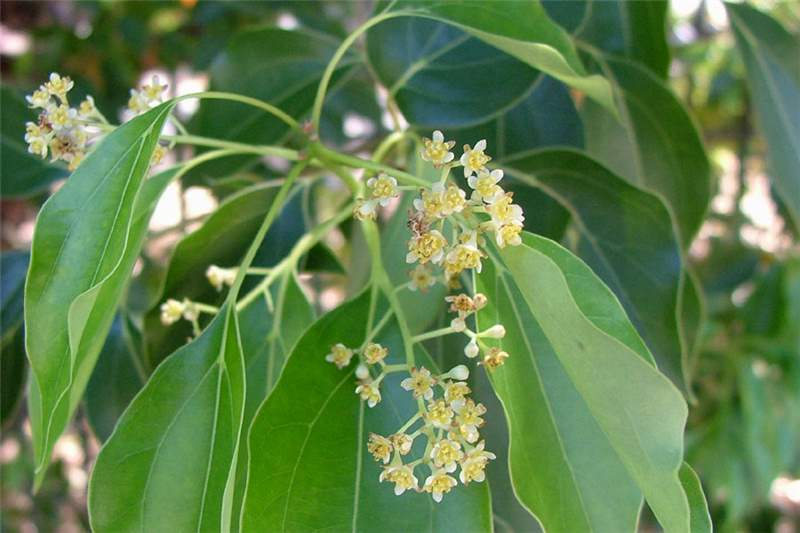Today, camphor is chemically manufactured from turpentine oil.
Contents
Uses
- Camphor used to be made by distilling the bark and wood of the camphor tree.
- It is used in products such as Vicks VapoRub.
- Camphor products can be rubbed on the skin (topical application) or inhaled. Be sure to read the label to find out how the product should be administered.
- People use camphor topically to relieve pain and reduce itching.
- It has also been used to treat fungal infections of the toenail, warts, cold sores, hemorrhoids, and osteoarthritis.
- Camphor is used topically to increase local blood flow and as a “counter-irritant,” which can reduces pain and swelling by causing irritation. It is important not to apply camphor to broken skin, because it can enter the body quickly and may reach concentrations that are high enough to cause poisoning.
- Some people maybe use camphor to treat respiratory tract diseases and to treat heart disease symptoms.
- Camphor is also used topically as an eardrop, and for treating minor burns.
- Some people inhale camphor to reduce the urge to cough.
Benefits
- Camphor seems to stimulate nerve endings that relieve symptoms such as pain and itching when applied to the skin.
- Camphor is also active against fungi that cause infections in the toenails.
Cautions
- Camphor is LIKELY SAFE for most adults when applied to the skin in a cream or lotion in low concentrations. Camphor can cause some minor side effects such as skin redness and irritation. Do not use undiluted camphor products or products containing more than 11% camphor. These can be irritating and unsafe. Camphor is also LIKELY SAFE for most adults when inhaled as vapor in small amounts as a part of aromatherapy. Don’t use more than 1 tablespoon camphor solution per quart of water.
- Do not heat camphor-containing products (Vicks VapoRub, BenGay, Heet, many others) in the microwave. The product can explode and cause severe burns.
- Camphor is POSSIBLY SAFE when applied to the skin in higher concentrations for a short time.
- Camphor-containing products are LIKELY UNSAFE when applied to broken or injured skin. Camphor is easily absorbed through broken skin and can reach toxic levels in the body.
- Camphor is UNSAFE when taken by mouth by adults. Ingesting camphor can cause severe side effects, including death. The first symptoms of camphor toxicity occur quickly (within 5 to 90 minutes), and can include burning of the mouth and throat, nausea, and vomiting.
- Pregnancy and breast-feeding: Taking camphor by mouth is UNSAFE during pregnancy or breast-feeding. The safety of applying camphor to the skin during pregnancy or breast-feeding is unknown. Do not risk your health or your baby’s. Avoid using camphor during pregnancy.
- Children: Camphor is POSSIBLY UNSAFE in children when applied to the skin. Children tend to be more sensitive to the side effects. Camphor is definitely UNSAFE when taken by mouth. Seizures and death can occur if these products are eaten. Keep camphor-containing products away from children.
- Liver disease: Taking camphor by mouth or applying it to the skin have been linked to potential liver damage. In theory, using camphor might make liver disease worse.
- Although it is an UNSAFE practice, some people take camphor by mouth to help them cough up phlegm, for treating respiratory tract infections, and for intestinal gas (flatulence). Experts warn against doing this because, when ingested, camphor can cause serious side effects, even death.
- Camphorated oil (20% camphor in cottonseed oil) was removed from the U.S. market in the 1980s because of safety concerns. It continues to be available without a prescription in Canada.
- It is important not to apply camphor to broken skin, because it can enter the body quickly and may reach concentrations that are high enough to cause poisoning.
Other Names
Alcanfor, Arbre à Camphre, Camphor Tree, Camphora, Camphora Officinarum, Camphre, Camphre de Laurier, Camphre Gomme, Camphrier, Cemphire, Cinnamomum Camphora, dl-Camphor, dl-Camphre, Gum Camphor, Kapur, Karpoora, Karpuram, Laurel Camphor, Laurus camphora.
References
Source: WebMD, “Camphor”, http://www.webmd.com/vitamins-supplements/

